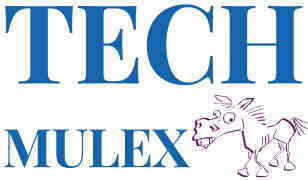Unveiling the Fortune of Justine Gundelfinger: Her Net Worth and Top Earnings
Do you know Justine Gundelfinger? You may not have heard of her like you know the Kardashians or Elon Musk, but she’s definitely a name you want to remember. The 43-year-old businesswoman from New Jersey has built a successful career for herself, with a net worth that will fascinate you. In this blog post, we’re going to unveil Justine Gundelfinger’s net worth, her top earnings, and other fascinating details about her life.
Introduction
Justine Gundelfinger is a name that’s known in financial circles, but not so much to the general public. A graduate of Seton Hall University, Justine started her career in the mortgage industry. In 2008, she started her own mortgage company which has since grown significantly. In 2018, she sold the company and retired at the age of 41, having amassed a great deal of wealth.
Business Ventures
Justine Gundelfinger’s primary source of wealth is her award-winning business venture. She founded Gundy Mortgage in 2008, which grew to become one of the most successful mortgage companies in New Jersey. In 2018, she sold her stake in Gundy Mortgage and retired, earning a huge sum of money following the sale. Her entrepreneurial pursuits have made her a wealthy woman, with a net worth in the millions of dollars.
Investments
Justine Gundelfinger is also an astute investor. In addition to her business ventures, she has invested in various industries, including real estate, stocks, and mutual funds. She has demonstrated her flair for financial investments and has earned a considerable amount of money through smart investment strategies.
Net Worth
Justine Gundelfinger’s net worth is estimated to be around $20 million. This is an impressive amount of money for someone who started out in the mortgage industry just over a decade ago. Her business ventures and investment strategy have served her well, and she is now one of the wealthiest women in New Jersey.
Top Earnings
Although it’s difficult to pinpoint Justine Gundelfinger’s top earnings down to the exact dollar, we can estimate that she earned millions of dollars through the sale of Gundy Mortgage in 2018. Her investments in various industries have also paid off, making her a very wealthy woman.
The Future
Justine Gundelfinger sold her mortgage company and retired at the age of 41. Since then, she has been enjoying her retirement, travelling the world, and spending time with family and friends. It’s unclear what her future holds, but knowing her astute business acumen, we’re sure that she’s not done making money.
FAQs
1. How much is Justine Gundelfinger worth?
Justine Gundelfinger’s net worth is estimated to be around $20 million.
2. What is Justine Gundelfinger’s primary source of wealth?
Justine Gundelfinger’s primary source of wealth is her award-winning business venture, Gundy Mortgage.
3. What other industries has Justine Gundelfinger invested in?
Justine Gundelfinger has invested in various industries, including real estate, stocks, and mutual funds.
4. When did Justine Gundelfinger retire?
Justine Gundelfinger retired in 2018 at the age of 41, following the sale of Gundy Mortgage.
5. How did Justine Gundelfinger earn her wealth?
Justine Gundelfinger earned her wealth through her business ventures, smart investment strategies, and astute financial management.
6. Has Justine Gundelfinger made any philanthropic contributions?
Justine Gundelfinger is known for her philanthropic contributions to various causes, including education and animal welfare.
7. What are Justine Gundelfinger’s future plans?
It is unclear what the future holds for Justine Gundelfinger, but given her entrepreneurial skills, it’s safe to assume that she will continue to be involved in various business ventures.
Conclusion
Justine Gundelfinger is a successful businesswoman who has achieved great wealth through her entrepreneurial skills and smart investment strategies. Her net worth is impressive, and she is one of the wealthiest women in New Jersey. Although she retired at the age of 41, we’re sure that she’s not done making money, and we look forward to hearing about her future business ventures.
